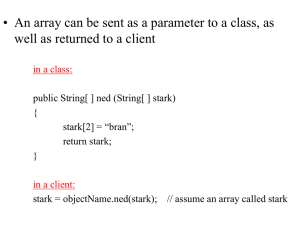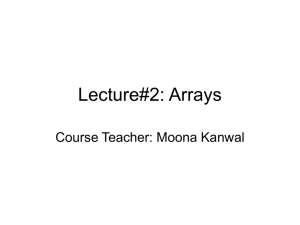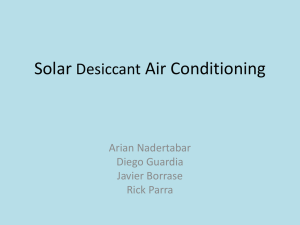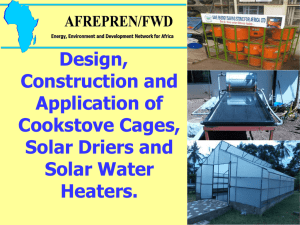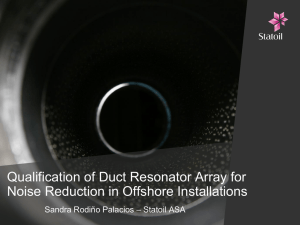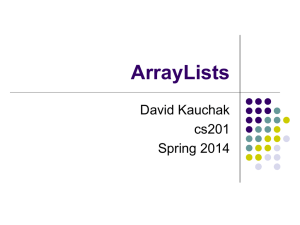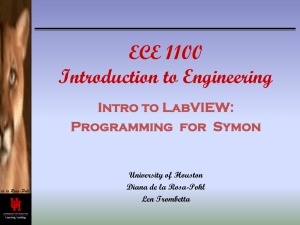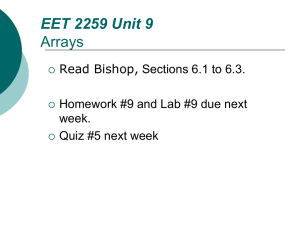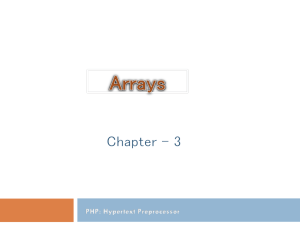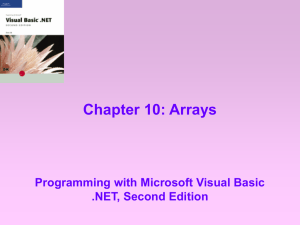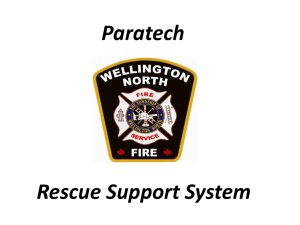Blue and Grey - Solar Car Challenge
advertisement
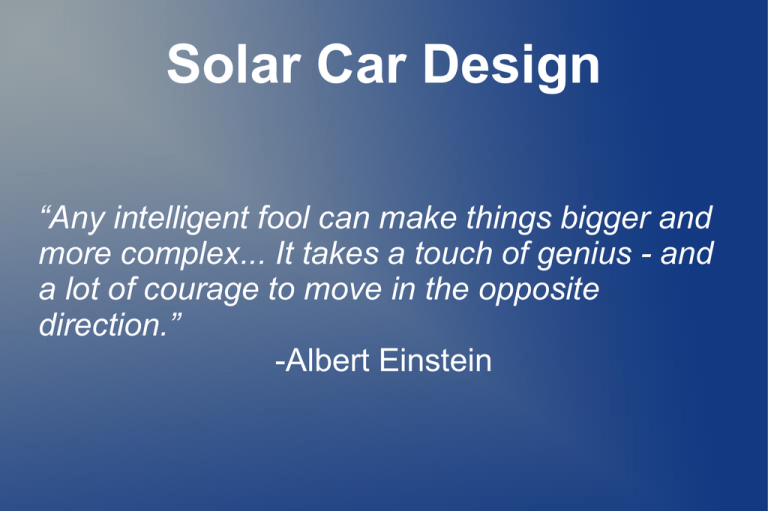
Solar Car Design “Any intelligent fool can make things bigger and more complex... It takes a touch of genius - and a lot of courage to move in the opposite direction.” -Albert Einstein Keep It Simple! Key Ideas To Focus On Safety Reliable Must first finish the race. Efficient Is this safe? Performance Considerations. Execution Can we do it? Process Learn general solar car concepts Spends time observing successful executions Read Event Rules! Work on design Read Event Rules! A lot of design problems and considerations can be solved simply by applying the constraints found in the rules. Overview Array Position Wheel Layout Frame Suspension Electrical Array Position A Few Concepts Above Body Body Contour Below Driver's Head/Canopy Array Position Above Body No Shadows from Driver or other components. Design Freedom below array Array Position Body Contour Aerodynamic Shaded by General Shape of Car Many Angles to sun Array Position Below Driver's Head Shaded by any items above array Can be bright for driver Driver is exposed to more direct sun without canopy Flat Array vs. Curved Flat Solar Arrays Easier to execute Angle to sun less of a concern Curved Solar Arrays Higher the angle the greater chance for breaks without ideal support. Angle to sun more of a concern Power Tracker Considerations Hybrid Array Increase overall array efficiency by placing higher efficient cells in most optimal position. Wheel Layout 3 Wheel 2 in front 1 in front 4 Wheel 3 Wheel Layout 1 in Front Generally less stable Unstable in most turns at decent speed 3 Wheel Layout 2 in Front Generally Stable “Gets it done” Popular 4 Wheel Possibly heavier than 3 wheels due to extra suspension Potential to provide better support and ride Road Debris benefit Frame Space Frame Triangles Usually welded metal Aluminum Steel Tub Usually composite Carbon Fiber Fiberglass Tube-like shapes/sections Frame Space Must be designed to support all necessary loads Frame Tub/Composite Lighter Stronger Easier to design Harder to execute Higher cost Important Cargo Driver Batteries Suspension mounts Array mounts Motor/Motor controller Suspension Do you need one? Not necessarily. Good idea? Solar Cells are fragile Road Debris Driver Comfort and ultimately Driver Safety Suspension Types Double Wishbone Popular MacPherson Strut or McPherson strut Suspension Double Wishbone Suspension MacPherson Strut or McPherson strut Electrical All solar cars are electric (battery) cars with an added array. All solar car main electrical systems look schematically the same. Difference is in the details and execution. Electrical Solar Cars are cars first, battery powered/electric cars second, and solar cars third. Electrical Power Trackers Converts and optimizes array power for system. Not needed, but a good idea. High cost. Power Tracker for each array string/angle, or one large Power Tracker for the whole array. Electrical Fuses Specific Fuse Detailed by Event Rules. Add fuses where it makes sense for added safety. Switches Specific Switches Detailed by Event Rules. Add switches when it makes sense for added safety. Electrical AC vs. DC We're working with DC. Make sure components are DC rated for your application. Contact manufacturer or trusted consultant to make sure your components will work reliably with your DC application. Electrical Wire Size wire for worst case scenario. Temperature Voltage Current Wire should be capable of carrying more current than fuses at operating temperatures. Summary Keep It Simple Safe Reliable Efficent Questions



